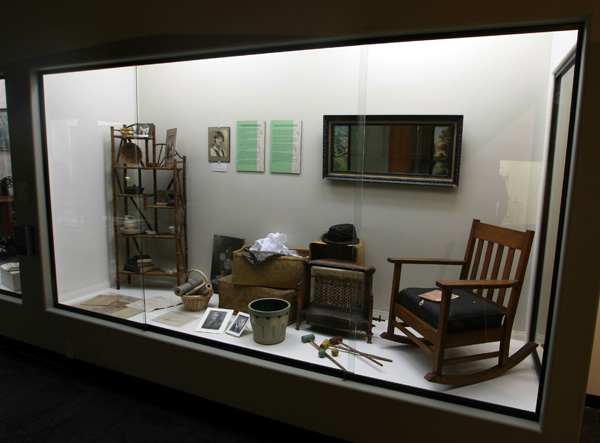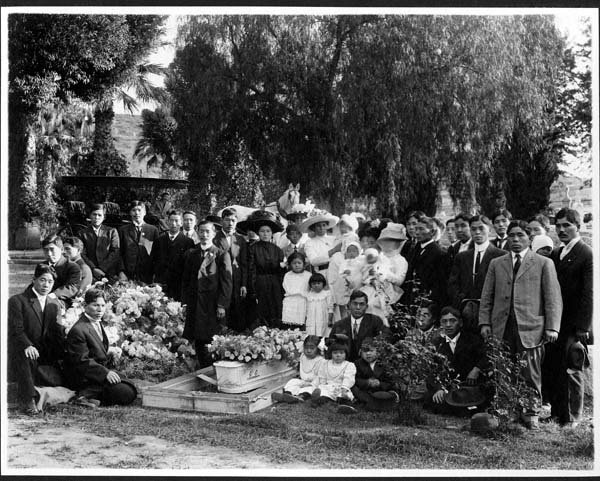Museum of Riverside

Harada Exhibit Virtual Tour - Room #2 : Case 1
The Haradas Purchase a Home

The Haradas experienced tragedy in 1913 when son Tadao contracted diphtheria and died in the rooming house. Partially blaming his death on the conditions of the rooming house where they lived, the Haradas were eager to find a home of their own with more space. The Harada family moved to a new rooming house and in April 1916, Ken gave birth to Clark Kohei.
 A pivotal point in the Harada story occurred with the death of son, Tadao. Harold Harada recalled later, 'My dad told me many times how he had held Tadao
in his arms . . . He cradled him and tried to help him with
his breathing. He was choking to death . . . and did
eventually die in my dad’s arms . . . I think that really
changed his whole life because he wanted to get his family
out of there and into a better environment. And I don’t
think Heaven or Hell would stop him . . . from purchasing a
home that he thought would be . . . in the best interests of
this family.' [Rawitsch, Mark H., Interviews with Members of the Harada Family, Mark Rawitsch, 2003, p. 142]
A pivotal point in the Harada story occurred with the death of son, Tadao. Harold Harada recalled later, 'My dad told me many times how he had held Tadao
in his arms . . . He cradled him and tried to help him with
his breathing. He was choking to death . . . and did
eventually die in my dad’s arms . . . I think that really
changed his whole life because he wanted to get his family
out of there and into a better environment. And I don’t
think Heaven or Hell would stop him . . . from purchasing a
home that he thought would be . . . in the best interests of
this family.' [Rawitsch, Mark H., Interviews with Members of the Harada Family, Mark Rawitsch, 2003, p. 142]
In early December 1915, Jukichi inquired about a house at 3356 Lemon Street, listed for sale in the Riverside Daily Press. Initially, the owner was reluctant to sell to a Japanese family. However, an agreement was reached and the Haradas purchased the home for $1500. Jukichi and Ken were aware of the 1913 California Alien Land Law that prevented "aliens ineligible for citizenship" from purchasing real estate. But they believed they could legally record the property in the names of their American-born children. On December 22, 1915, the house on Lemon Street was recorded in the names of Mine, Sumi, and Yoshizo. News spread and neighbors formed a committee to protest this sale to a Japanese family. The committee hired Riverside lawyer Miguel Estudillo to file a lawsuit and offered to pay $500 over the original price of the house to entice the Haradas to live elsewhere. However, in 1916, confident in their purchase, the Haradas completed renovations, purchased some new furniture and moved into their new home. Notably, the Haradas received offers of support from Frank Miller, Master of the Mission Inn and his brother Ed Miller. By September, California Attorney General Ulysses Webb’s office authorized Estudillo to proceed with the action against the Haradas. The case was filed as The People of California v. Jukichi Harada, et al. in October 1916 and was the first test case of the 1913 California Alien Land Law. This lawsuit attracted national and international attention as Japan was emerging as an international power and would soon be an American ally against Germany in World War I. In September 1918, Judge Hugh Craig in the Riverside County Superior Court ruled in favor of the Haradas. Craig’s opinion upheld the children’s right as native born citizens to own property under the 14th Amendment.


